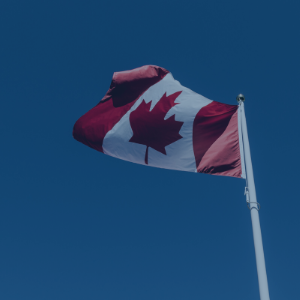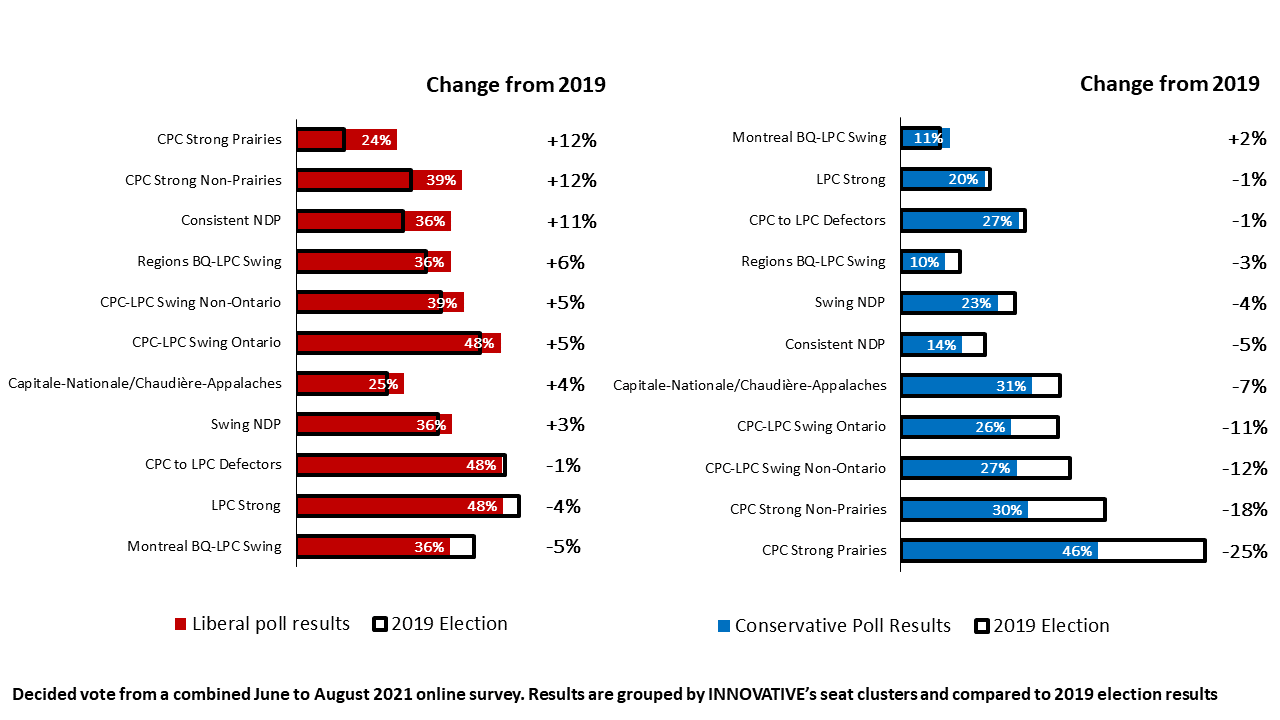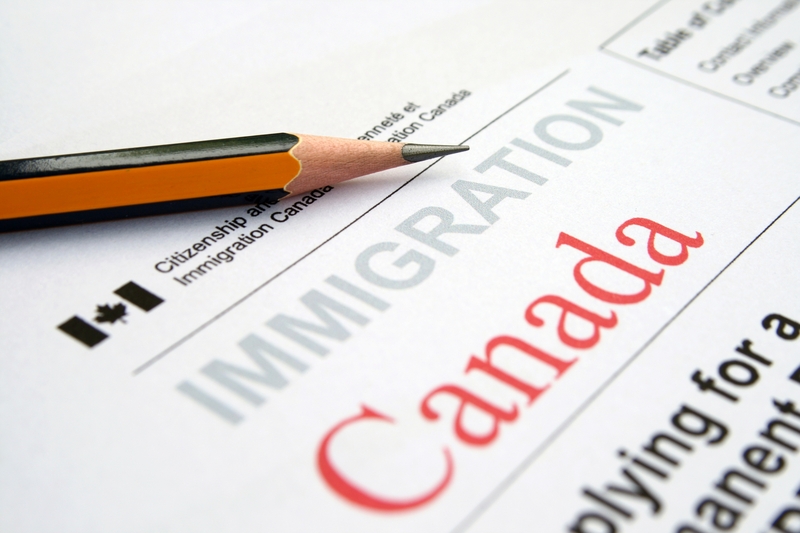
As Canada prepares for its 44th election, the Liberals start safely in majority territory. Of course, the election is not today, and we believe campaigns matter, but the Liberals are starting a 36-day dash with a heads and the other parties will have to catch up.
How can we say that?
It is important to remember the rules. The winner in Canadian elections is the party that has the most seats, not the most votes. Usually those two things are the same, but they don’t have to be. In fact, in the last election, the Conservatives had more votes than the Liberals. But a lot of the Conservatives votes were piled up in big victories in the Prairies. The Liberal votes were better distributed and allowed them to win more seats.
In order to count seats, we have grouped seats into 12 clusters based on the patterns of party competition in the 2019, 2015 and 2011 election. We then combined our three latest polls from June, July and August with 8,799 respondents to see how the race is developing in each of these riding clusters. The sample of weighted to 6,200 because we have oversamples in some provinces. The detailed methodology and results can be found in our full report.

The big story in our results is that the pattern of competition is shifting. The Liberals are gaining ground disproportionately in seats we would assume are fairly safe for both the Conservatives and the NDP. This means the Conservatives and NDP have to focus not just on holding on to traditional swing ridings, but on protecting seats they would normally feel are safer.
To see how we group seats and what to results look like for each seat cluster, please check out our full report.
































